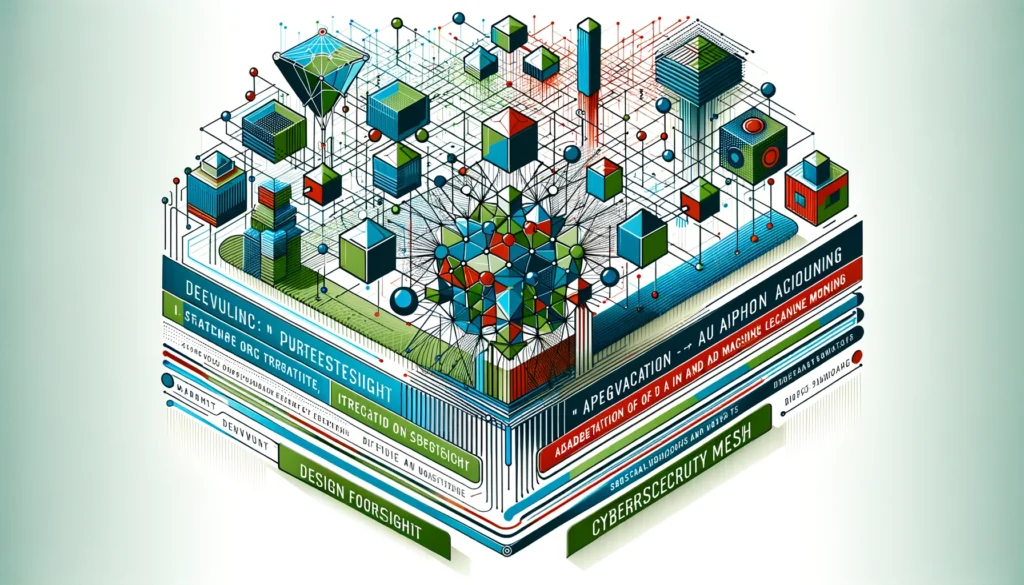
Introduction
In the digital era, businesses must scale and fortify their networks to succeed. The shift towards digital transformation heightens the need for networks that can manage more traffic, safeguard data, and keep operations efficient. This discussion focuses on network scalability and resiliency, highlighting recent trends, technologies, and top strategies defining network infrastructure’s future. Grasping these crucial ideas allows companies to anticipate and overcome future challenges. It ensures continuous service and a competitive advantage in the digital market. By exploring these concepts, businesses can prepare for a dynamic digital landscape, maintaining agility and reliability in their network operations.
Understanding Scalability and Resiliency in Networks
Scalability in networking means a network’s capacity to expand and smoothly manage more demand. It’s vital for businesses expecting growth or facing fluctuating traffic. Scalable networks adjust to change without sacrificing speed or dependability, optimizing resource use.
Resiliency is the network’s capability to sustain service levels amid problems. It includes strategies for detecting, enduring, and recovering from failures, thus guaranteeing ongoing operations and safeguarding data.
The synergy between scalability and resiliency underpins contemporary networks. A scalable but non-resilient network might support more users but collapse under pressure or cyber threats. In contrast, a resilient but non-scalable network could remain operational during failures but falter when demand surpasses its limits. These principles are fundamental to strong network design, empowering companies to back digital transformation efforts while maintaining performance and security excellence.
Understanding and integrating scalability and resiliency are essential for today’s digital infrastructures. They ensure networks are both flexible and sturdy, ready for unexpected demands or disruptions. This dual focus helps organizations stay competitive and reliable in a fast-evolving digital landscape. By prioritizing these aspects, businesses can navigate the challenges of digitalization, offering seamless services and securing a strategic advantage in the marketplace. This approach not only addresses current needs but also lays the groundwork for future innovation and growth.
Trends and Innovations in Network Technology
The network technology landscape is ever-changing, driven by several key trends and innovations that boost scalability and resiliency:
5G Technology
5G Technology is transforming connectivity with unprecedented speeds, lower latency, and greater capacity. It empowers businesses to embrace IoT and edge computing, thereby elevating operational efficiency and customer experiences.
Software-Defined Networking
Software-Defined Networking (SDN) provides a flexible network infrastructure, manageable from a central point. This adaptability leads to faster responses to evolving network demands, bolstered security, and simplified management, significantly enhancing scalability and resilience.
Network Function Virtualization
Network Function Virtualization (NFV) separates network functions from physical hardware, hosting them on virtual machines. This shift minimizes hardware reliance, scales up network capabilities, and streamlines management processes.
AI and Machine Learning
AI and Machine Learning are revolutionizing network management by introducing predictive analytics for performance monitoring, automated problem-solving, and advanced security through anomaly detection. This integration vastly improves efficiency and network intelligence.
Cybersecurity Mesh
Cybersecurity Mesh adopts a novel strategy by individually securing each asset in a dispersed network. This technique ensures thorough security and plays a vital role in bolstering network resilience.
Edge Computing
Edge Computing enhances network resilience by processing data near its origin, which minimizes latency and bandwidth consumption. This approach enables real-time data processing, crucial for modern network architectures.
Collectively, these advancements present a transformative impact on network technology. They not only address current requirements but also set the stage for future innovation. By leveraging these technologies, organizations can significantly enhance their network’s scalability and resilience. This is essential for supporting the increasing demand for digital services, ensuring data integrity, and maintaining uninterrupted operations.
The interplay of these technologies signifies a shift towards more agile, secure, and efficient networks. As businesses continue to navigate the digital landscape, understanding and adopting these trends will be critical for success. They offer the tools needed to build networks that can withstand the challenges of tomorrow while providing the flexibility and security necessary in today’s digital world. By focusing on these areas, companies can ensure they remain competitive and capable of meeting the evolving demands of their customers and the market.

Best Practices for Scalable and Resilient Networks
To ensure networks are scalable and resilient, adherence to specific best practices is crucial:
Designing for Growth and Durability
Networks must be architecturally planned with future scalability and present resiliency in mind. This involves incorporating redundant pathways, automatic failover systems, and infrastructure that can expand alongside the business.
Leveraging SDN and NFV
Software-Defined Networking (SDN) and Network Function Virtualization (NFV) provide unparalleled flexibility and control. They allow for rapid adjustments to network demands, streamline management, and bolster security, crucial for both scalability and resilience.
Utilizing AI and Machine Learning
By integrating AI and machine learning, networks gain the ability to predict and prevent performance bottlenecks before they occur. This predictive capability, coupled with automated problem-solving, minimizes downtime and strengthens network resilience.
Establishing a Cybersecurity Mesh
Implementing a security framework that protects each network component individually ensures comprehensive security. This mesh approach is vital for maintaining data integrity and operational continuity, especially as cyber threats become more sophisticated.
Capacity Planning and Performance Monitoring
Regular monitoring and analysis of network performance help identify trends and predict future needs, enabling proactive capacity planning. This foresight ensures the network can handle growth without compromising performance.
Regular Updates and Patch Management
Keeping network software and hardware up to date is essential for both security and functionality. Regular updates and diligent patch management protect against vulnerabilities and ensure the network remains robust against emerging threats.
Diverse Connectivity Options
Incorporating a mix of wired and wireless connectivity options enhances network flexibility and resilience. This diversity ensures that if one connection type fails, others can maintain network functionality.
Cloud Integration
Embracing cloud technologies can significantly enhance network scalability and resilience. Cloud services offer on-demand resources, robust disaster recovery options, and global accessibility, which are key to modern network requirements.
Employee Training and Awareness
Educating staff on best practices for network management and security can prevent human errors that lead to network vulnerabilities. A well-informed team is a crucial defense against disruptions and attacks.
By following these practices, businesses can create networks that not only meet current demands but are also prepared for future challenges. This strategic approach ensures networks remain powerful, agile, and secure, providing a solid foundation for sustained business growth and innovation.

Challenges and Solutions
Despite technological progress, creating scalable and resilient networks faces hurdles. Key challenges involve handling the complexity of distributed networks, securing every node, and blending old systems with new technologies. To overcome these, a comprehensive network design strategy is essential.
Firstly, managing distributed networks’ complexity requires a clear understanding of their architecture. This includes knowing how different components interact and ensuring they can efficiently scale and recover from disruptions. A holistic approach, considering both current and future needs, is vital.
Secondly, ensuring security across all nodes is increasingly challenging as networks expand. Every additional node introduces potential vulnerabilities. Advanced security protocols and consistent updates are crucial for protection against new threats. Employing techniques like encryption and multi-factor authentication can safeguard data integrity.
Thirdly, integrating legacy systems with modern technologies poses significant hurdles. These older systems often cannot keep pace with the demands of new applications and data volumes. Adopting cloud services offers a solution, providing the necessary scalability and flexibility. Cloud platforms can bridge the gap between old and new, allowing for seamless data flow and application integration.
Moreover, training and continuous education for IT staff on the latest network technologies and security practices are essential. An informed team can make proactive decisions, ensuring the network remains robust against threats and capable of adapting to new demands.
Adopting these strategies can help address the challenges of building scalable and resilient networks. By focusing on holistic design, leveraging cloud technology for scalability, and prioritizing advanced security measures, organizations can create networks that support their goals in the face of evolving technological landscapes and threats.
FAQs
- What is the difference between network scalability and resiliency? A: Network scalability refers to the ability of a network to accommodate growth and manage increased demand, while resiliency is the network’s ability to maintain service levels in the face of challenges and failures.
- How does 5G technology contribute to network scalability? A: 5G technology offers higher speeds, lower latency, and increased capacity, enabling networks to handle more data and support new technologies like IoT and edge computing, thereby enhancing scalability.
- What role does AI play in network resiliency? A: AI and machine learning can improve network resiliency by providing predictive analytics for network performance, enabling automated troubleshooting, and enhancing security through anomaly detection.




